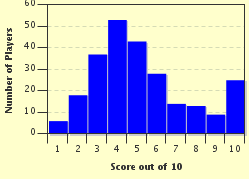Quiz Answer Key and Fun Facts
1. The man entrusted with the responsibility of landing a cosmonaut on the moon was referred to as the 'Chief Designer'. What was his name?
2. This spacecraft was originally designed to be the centrepiece of the Soviet manned lunar landing attempt.
3. A rival design bureau, OKB-52 led by Vladimir Chelomei, was given the task of developing a spacecraft to fly a man around the moon.
4. A large Saturn V class booster rocket called the N-1 or Nositel('carrier') was developed to launch the Soviet manned lunar mission. The first N-1 sat on its launch pad for over a year and was spotted by American spy satellites giving renewed impetus to the Apollo programme. What was it colloquially called by the West?
5. How many engines did the 1st stage of the N-1 booster rocket have?
6. The failure to develop a high energy liquid Hydrogen (LH2) powered engine meant that Korolev had to revise his original moon landing plan so that only one cosmonaut would be able to land on the moon
7. The Soviet manned lunar landing effort suffered a major blow when Sergei Korolev suddenly died. When was it?
8. Both programmes suffered major setbacks in early 1967 when Apollo 1 astronauts Virgil Grissom, Edward White, and Roger Chaffee were killed in a launch pad fire in January and cosmonaut Vladimir Komarov was killed during the final landing phase of the _________ mission in April.
9. The giant N-1 booster was successfully tested on its first flight in February 1969.
10. When Apollo 11 successfully landed on the moon in July 1969 the Soviet Union concentrated efforts on developing their automatic _________ probes disingenuously implying through press releases that they had never intended to send cosmonauts to the moon in the first place.
Source: Author
mstanaway
This quiz was reviewed by FunTrivia editor
bloomsby before going online.
Any errors found in FunTrivia content are routinely corrected through our feedback system.

